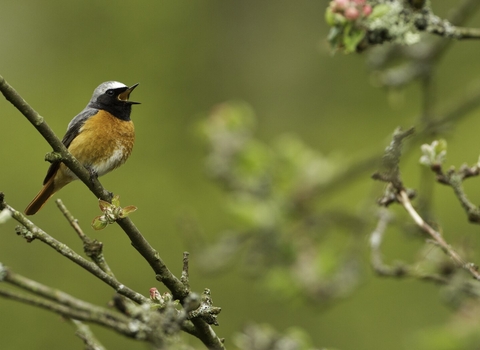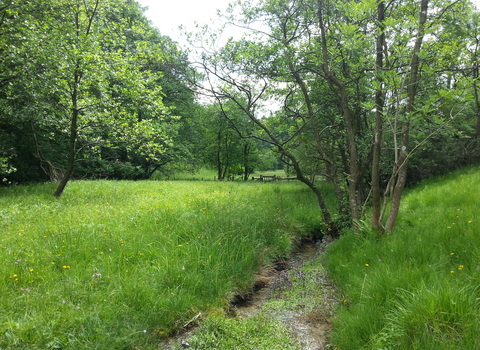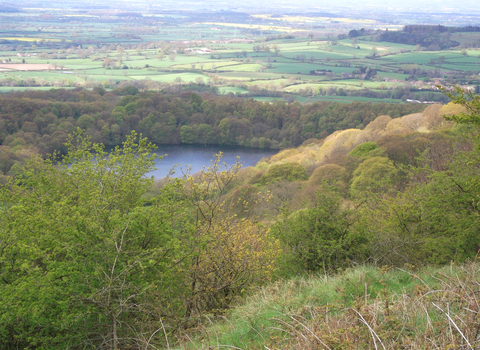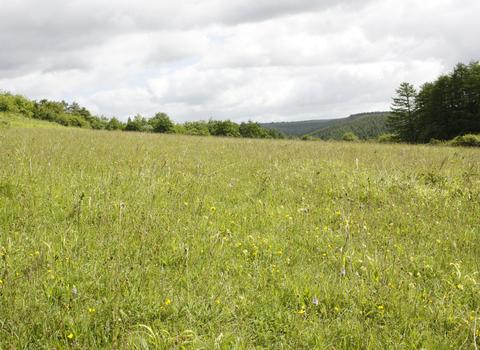Birch Wood Nature Reserve
Location
Know before you go
Dogs
on public rights of way only.
When to visit
Opening times
Open at all times.We recommend a 1 hour outing for this reserve, but you can combine with a trip to nearby Garbutt Wood and Ashberry, or follow rights of way for a longer walk in Bilsdale.
Best time to visit
March to JuneAbout the reserve
Tread quietly to see the deer before they see you; both roe and fallow are common here. Listen to the chorus of woodland birds. Seek out the gnarled veteran oaks and giant holly trees that give this woodland a distinctive character. Birch Wood is an enchanting hideaway where it’s worth savouring every step.
In spring the reserve is at its charming best: redstarts, pied flycatchers, blackcaps and chiffchaffs join the dawn chorus, and bluebells decorate the woodland floor. In summer, keep an eye out for common spotted orchids.
Habitat
Contact us
About
Lying within the boundary of the North York Moors National Park, Birch Wood is one of the Trust’s most beautiful and secluded of reserves.
Birch Wood is primarily a mix of oak, birch and sycamore, with a healthy understorey of rowan, hazel, hawthorn, elder, ferns and more. Because of the high deer population in the area, very few new trees other than holly ever manage to establish due to grazing damage, so a handful of small glades have been planted with young oaks and protected from browsing. This ensures a diversity of differentaged trees within the wood, and therefore the continuation of its existence.
Wildlife is in absolute abundance here as it is so relatively undisturbed. Great spotted woodpeckers and redstarts can be found within the wood, plus a wide range of other small birds.
As well as the deer, there is clear evidence of foxes, badgers, hedgehogs and grey squirrels throughout the wood, and there is also a healthy variety of small mammals. All these larger species thrive on a diverse insect population.
This ancient woodland site has been traditionally managed by man for hundreds of years, and to preserve this rare habitat we are continuing that management.
Seasonal highlights
- Spring: Plants - Bluebell; Primrose; Birds - Blackcap; Chiffchaff; Nuthatch
- Summer: Plants - Ferns; Common spotted orchid; Birds - Redstart; Speckled wood
- Autumn: Mammals - Red deer; Fallow deer; Roe deer
- Winter: Plants - Holly; Birds - Greater spotted woodpecker; Mammals - Stoat
History
Traditionally, Birch Wood would have had several different ‘industrial’ uses throughout its life. The woodland itself would have provided basic firewood, but also more specialist material such as hazel coppice for hurdle and wattle making, and evidence of this is still apparent in some of the mature coppice stools that can be seen around the woodland.
Farmers would also have pollarded trees in the woodland centuries ago to use the young branches and leaves as winter fodder for cattle and sheep in the days before mineral supplements were available, and this can still be seen in the gnarled shape of the few surviving veteran oaks.
The site has also been quarried for the sandstone bedrock and there are several excavated grottos in the high parts of the wood.
Directions
Public transport
None available
Directions
Birch wood is located just over 7 miles north of Helmsley on the B1257, immediately adjacent to the road. Parking is available in a large lay-by just past the nature reserve entrance (if heading north, it is on the right of the road). Care should be taken when walking from the lay-by to the nature reserve as there is no footpath.
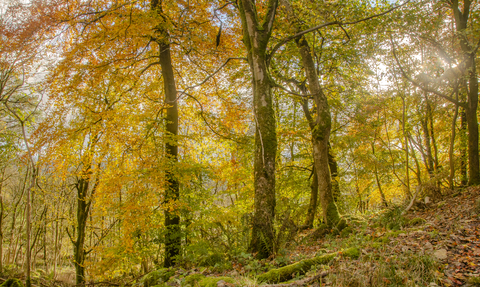
The autumn colours were even more beautiful when the sun came out
Photo Credit - Telling our Story Volunteer, Sara

